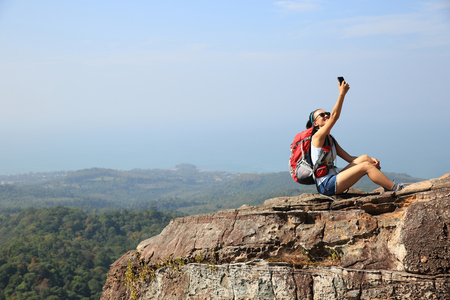1. Introduction: U.S. Hiking Culture and Backpack Essentials
America has a long-standing love affair with the great outdoors. From the towering peaks of the Rockies to the lush forests of the Appalachians, hiking is more than just a pastime—its a way of life for millions across the country. Whether its day hikes in national parks or multi-day backpacking adventures on iconic trails like the Pacific Crest or Appalachian Trail, U.S. hikers value freedom, adventure, and self-reliance.
Why Hiking Is So Popular in the U.S.
The United States boasts diverse landscapes and an extensive network of public lands open to everyone. This accessibility fuels the hiking culture and encourages people of all backgrounds to hit the trail. For many Americans, hiking is not only about staying fit but also about connecting with nature and finding peace away from city life.
What Makes a Good Hiking Backpack?
Choosing the right backpack can make or break your outdoor experience. A good hiking pack balances comfort, capacity, durability, and features tailored to your needs. Here are some essentials that U.S. hikers look for when picking out a backpack:
| Backpack Feature | Why It Matters |
|---|---|
| Fit & Comfort | A well-fitted pack helps prevent soreness and injury during long treks. |
| Capacity | Daypacks (15-30L) for short hikes; larger packs (40-70L+) for overnight trips. |
| Weight | Lighter packs reduce fatigue but must still be durable. |
| Pockets & Organization | Helps keep gear accessible and separated (hydration sleeves, hip belt pockets, etc.). |
| Weather Resistance | Packs with water-resistant materials or included rain covers protect gear from sudden storms. |
| Ventilation | Back panels with mesh or airflow channels keep you cool on hot trails. |
| Durability & Material Quality | Tough fabrics withstand rugged American trails and variable weather conditions. |
The Importance of Choosing the Right Pack in America’s Outdoors
The vastness and variety of U.S. trails mean that no single backpack fits every hiker or every hike. From quick jaunts in state parks to week-long treks in remote wilderness areas, having the right pack keeps you comfortable, safe, and prepared for whatever nature throws your way. That’s why American hikers are passionate about their gear—and why certain brands have become favorites nationwide.
2. Overview of the Top 10 Most Loved Backpack Brands
When it comes to hitting the trails, American hikers have strong opinions about their gear—especially backpacks. The following brands are consistently rated as favorites by outdoor enthusiasts across the United States. Here’s a quick look at what makes each one stand out in the eyes of U.S. hikers.
| Brand | What Sets It Apart |
|---|---|
| Osprey | Known for comfort, customizable fit, and durability. Their All Mighty Guarantee is a big plus for many Americans who value long-term investment. |
| Deuter | Praised for innovative ventilation systems and ergonomic designs, making them a go-to choice for long-distance trekkers. |
| Gregory | Highly regarded for their load distribution technology and plush padding, which make even heavy loads feel lighter on your back. |
| The North Face | A household name in the U.S., loved for reliability and stylish looks that work both on the trail and around town. |
| Granite Gear | Favored by ultralight backpackers for their minimal weight without sacrificing durability or functionality. |
| Arcteryx | Popular among serious adventurers for premium materials and weatherproofing—a top pick for challenging conditions. |
| Hyperlite Mountain Gear | Pioneers in ultralight Dyneema packs, these are coveted by thru-hikers looking to shed every possible ounce. |
| L.L.Bean | A classic American brand with a reputation for rugged, no-nonsense packs and outstanding customer service. |
| Mystery Ranch | Loved for their innovative load-carrying systems and military-grade toughness—perfect for rough terrain and heavy hauls. |
| REI Co-op | Their in-house brand offers great value, solid performance, and caters directly to American hikers’ needs with a wide range of options. |
Main Features That Hikers Love About These Brands
- Comfort-Focused Designs: Most brands prioritize padded straps, adjustable frames, and breathable back panels so you can trek longer without discomfort.
- Durability: Sturdy materials and quality zippers are standard—American hikers want packs that last through years of adventure.
- Innovative Storage: Smart pocket layouts, hydration compatibility, and quick-access features make packing (and unpacking) easy on the go.
- Sizing Options: From weekend getaways to week-long expeditions, these brands offer sizes to fit every trip and body type.
- Warranty & Customer Support: Many U.S. hikers value generous warranties and responsive customer service—another reason these brands top the charts.
![]()
3. In-Depth Reviews: Best-Selling Models from Each Brand
When it comes to hitting the trails, American hikers know their gear. Here’s a detailed look at the flagship backpacks from the top 10 brands, focusing on comfort, durability, weight, and real-world features that matter most on U.S. trails.
| Brand | Model | Main Features | Weight | Best For |
|---|---|---|---|---|
| Osprey | Aether/Ariel Series | Custom-fit harness, Anti-Gravity suspension, multiple access points | 4.7 lbs (mens M) | Multi-day backpacking |
| Deuter | Aircontact Lite | Aircomfort back system, adjustable torso length, robust fabrics | 4.2 lbs (mens M) | Backcountry adventures |
| Gregory | Baltoro/Deva Series | Dynamic Response suspension, rain cover included, lumbar tune insert | 4.8 lbs (mens M) | Heavy loads & comfort seekers |
| The North Face | Banchee 50 | Slim profile, Dyno Lite System, versatile pocket layout | 3 lbs 1 oz | Lightweight hiking & overnights |
| Arcteryx | Bora AR 63/61 | RotoGlide hipbelt, durable weather-resistant materials, minimalist design | 4.7 lbs (unisex) | Tough terrain & long trips |
| Lowe Alpine | Cerro Torre 65:85 | Axiom 7 carry system, expandable capacity, hardwearing fabric | 5.6 lbs (M/L) | Extended expeditions & big loads |
| Mystery Ranch | Terraframe 65 | Overload feature for extra gear, robust frame, quick-access pockets | 5.7 lbs | Technical hikes & gear-heavy trips |
| Granite Gear | Crown 3 60 | Padded hipbelt, removable lid converts to chest pack, ultralight build | 2.3 lbs | Thru-hiking & minimalists |
| Zpacks | Arc Blast 55L | Cuben fiber construction, adjustable arc frame for ventilation, super light | 1.2 lbs | Ultralight enthusiasts & thru-hikers |
| Kelty | Coyote 65 | Padded PerfectFIT suspension system, lots of pockets, affordable price point | 4.8 lbs | Budget-minded backpackers & beginners |
Main Considerations for U.S. Hikers:
Comfort and Fit:
The best packs offer customizable harness systems and hipbelts to ensure you stay comfortable mile after mile. Brands like Osprey and Gregory stand out with their adjustability and plush padding.
Durability:
If you’re trekking through rugged national parks or scrambling over rocky terrain in the Rockies or Sierra Nevada, tough fabrics and reinforced stitching are a must. Arc’teryx and Mystery Ranch are known for their bombproof construction.
Weight:
The lighter your pack, the more enjoyable your hike—especially for long-distance treks like the Pacific Crest Trail or Appalachian Trail. Zpacks and Granite Gear lead the way in ultralight design without sacrificing essential features.
Trail-Tested Features:
Pockets for water bottles and snacks, easy-access compartments for rain gear or maps, and attachments for trekking poles are crucial on American trails where conditions can change fast. Kelty’s Coyote series wins on organization at a wallet-friendly price.
Quick Comparison Table Recap:
- Osprey Aether/Ariel: Premium comfort & support for heavy loads.
- Zpacks Arc Blast: Cutting-edge ultralight materials for serious mileage.
- Mystery Ranch Terraframe: For those who carry awkward or bulky gear off-trail.
No matter where you hike in the U.S.—from alpine peaks to desert canyons—these backpacks represent the best balance of comfort, durability, weight savings, and hiker-friendly features for every adventure style.
4. Direct Comparisons: Pros, Cons, and Price Points
Side-by-Side Comparison of the Top 10 Backpack Brands for U.S. Hikers
Finding the perfect backpack can make or break your hiking experience. To help you choose wisely, here’s a side-by-side comparison of the top 10 brands most loved by American hikers. We’ll highlight what makes each brand stand out, where they might fall short, and how they stack up in terms of value for money.
| Brand | Strengths | Weaknesses | Typical Price Range |
|---|---|---|---|
| Osprey | Exceptional comfort, innovative features, top-notch durability, lifetime warranty | Slightly heavier than some ultralight options, premium price point | $130–$350 |
| Deuter | Great ventilation, reliable build quality, excellent back support | Heavier frames, limited style variety in the U.S. | $120–$300 |
| Gregory | Comfortable fit system, solid load transfer, hydration compatibility | Packs can be bulky for minimalist hikers | $140–$330 |
| The North Face | Well-known brand, good all-around performance, accessible pricing | May lack specialized features serious hikers want | $90–$260 |
| Arc’teryx | Top-tier materials, weather resistance, sleek design aesthetic | High price tag, limited size options for some models | $180–$400+ |
| REI Co-op | Excellent value for money, user-friendly features, strong customer service | A bit heavier than ultralight brands, less tech-focused design | $80–$220 |
| Granite Gear | Lightweight construction, customizable options, popular on long trails (AT & PCT) | Simpler design may lack creature comforts, niche availability in stores | $150–$270 |
| Lowe Alpine | Tough build quality, practical organization pockets, dependable zippers/buckles | Sizing can be tricky for smaller torsos, less common in U.S. stores compared to competitors | $110–$250 |
| Mystery Ranch | Bomber durability, modular systems for various uses (hiking/hunting), great for heavy loads | Tends to be heavier and pricier due to rugged construction | $200–$450+ |
| Zpacks | Super ultralight designs (Dyneema), beloved by thru-hikers, packs are extremely customizable | Packs are pricey and may not appeal to casual hikers; minimalist features only | $300–$400+ |
Main Takeaways for U.S. Hikers:
- If comfort and lifetime support matter most, Osprey wins big.
- If youre looking for lightweight gear for long-distance trails like the AT or PCT,Zpacks and Granite Gear are top choices.
- The North Face and REI Co-op offer great value at more budget-friendly prices—perfect for weekend warriors or beginners.
- If you want bombproof durability for carrying heavy loads in rugged terrain,Mystery Ranch won’t let you down.
How to Choose?
Your perfect pack depends on your hiking style and budget. Whether you’re aiming for a thru-hike or just hitting local trails on weekends, there’s something here for every kind of American hiker.
5. Expert Tips for Choosing the Right Backpack for Your Next U.S. Hike
Picking the perfect backpack is key to enjoying your time on America’s favorite trails, whether you’re heading out for a quick day trip in the Rockies or a multi-day trek along the Appalachian Trail. Here’s how to match your pack to your hiking style, local conditions, and what makes U.S. hiking unique—plus what to think about after you buy.
Match Your Pack to Your Hiking Style
| Hiking Style | Recommended Pack Type | Top Features to Look For |
|---|---|---|
| Day Hiking | Daypack (15-30L) | Hydration sleeve, lightweight, easy-access pockets |
| Weekend Trips | Overnight Pack (35-50L) | Padded hip belt, ventilation, multiple compartments |
| Thru-Hiking/Long Distance | Multi-Day Pack (50-70L+) | Adjustable suspension, load lifters, external gear loops |
| Fast & Light/Trail Running | Running Vest/Minimalist Pack (5-20L) | Bounce-free fit, hydration integration, low weight |
Consider Regional Conditions in the U.S.
- Western U.S. (Rockies, Sierras): Go for packs with robust suspension systems and weather-resistant materials—these trails often mean big elevation changes and unpredictable weather.
- Southeast/Appalachian: Look for moisture-wicking back panels and rain covers; humidity and rain are common here.
- Southwest Deserts: Hydration compatibility is crucial. Choose light-colored packs to reflect heat and packs with ventilation for hot days.
- Northern States: Opt for insulated hydration sleeves and space for cold-weather gear if you hike in shoulder seasons or winter.
American Trail Favorites: What Hikers Love Most
- PCT (Pacific Crest Trail): Ultralight designs and removable features are favorites among thru-hikers aiming to shave ounces off their load.
- AT (Appalachian Trail): Durability and comfort matter—look for reinforced stitching and super-cushy straps for those long East Coast miles.
- Canyon Country: Packs with external mesh pockets make it easy to stash snacks and sunscreen for frequent access on exposed trails.
After-Purchase Considerations
- Proper Fit: Visit your local outdoor shop for a custom fitting—most brands offer adjustable torso lengths and hip belts. A good fit means less fatigue on the trail.
- Packing It Right: Learn how to distribute weight: keep heavy items close to your back and centered; lighter gear goes towards the outside or bottom of your pack.
- Caring for Your Backpack: Clean mud and sweat off after each hike with mild soap and water. Store it dry and uncompressed to keep its shape.
- Add-On Accessories: Consider add-ons like waterproof pack liners, extra hip-belt pockets, or attachable water bottle holsters based on your personal needs.
- Tweak as You Go: Don’t be afraid to adjust straps or try different packing setups—what works best can change depending on the hike or region!
The right backpack can make all the difference when you’re out exploring America’s great outdoors. Take these tips into account when choosing from our top 10 brands so your next adventure is as comfortable—and memorable—as possible!


